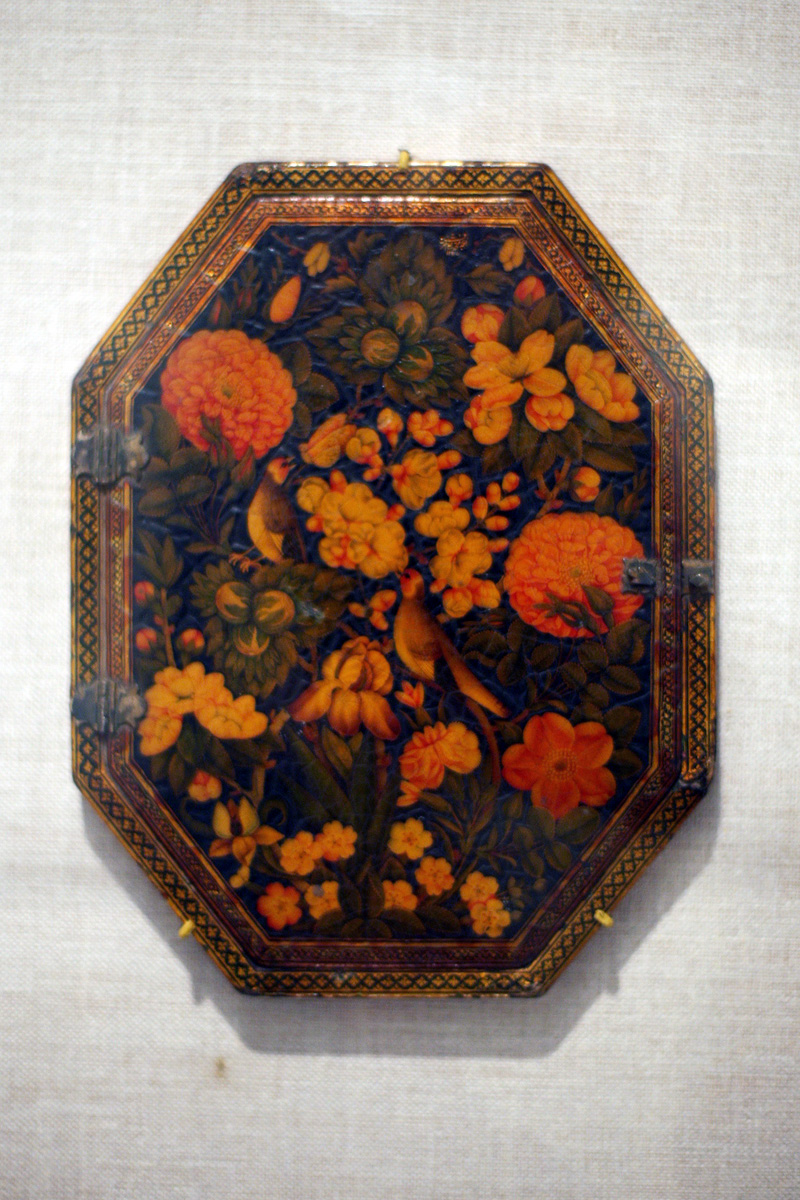|
'Ali Ashraf
'Ali Ashraf (; ''fl'' ''c.'' 1735–1780), was a Persian lacquer painter and miniaturist, active during the Afsharid dynasty and Zand dynasty. He was known for his lacquer painted (), lacquer painted mirror frames, and his use of the Persian (). He was trained under Mohammad Zaman. His work is included in museum collections, including the Metropolitan Museum of Art, the Victoria and Albert Museum in London, and the Brooklyn Museum. See also * List of Iranian artists The following list of notable Iranian artists (in alphabetical order by last name) includes artists of various genres, who are WP:ARTIST, notable and are either born in Iran, of Iranian descent or who produce works that are primarily about Iran. ... References {{Iran-artist-stub 1730s births 1780s deaths 18th-century Iranian painters Iranian miniature painters Lacquerware artists People from Urmia ... [...More Info...] [...Related Items...] OR: [Wikipedia] [Google] [Baidu] |
Urmia
Urmia (; ) is the largest city in West Azerbaijan Province of Iran. In the Central District of Urmia County, it is capital of the province, the county, and the district. The city is situated near the borders of Iran with Turkey and Iraq. The city lies at an altitude of above sea level along the Shahar River on the Urmia Plain. Lake Urmia, one of the world's largest salt lakes, lies to the east of the city, and the border with Turkey lies to the west. The city is the trading center for a fertile agricultural region where fruits (especially apples and grapes) and tobacco are grown. Even though the majority of the residents of Urmia are Muslims, the Christian history of Urmia is well preserved and is especially evident in the city's many churches and cathedrals. An important town by the 9th century, the city has had a diverse population which has at times included Muslims (Shias and Sunnis), Christians (Catholics, Protestants, Nestorians, and Orthodox), Jews, Baháʼ� ... [...More Info...] [...Related Items...] OR: [Wikipedia] [Google] [Baidu] |
Mohammad Zaman
Muhammad Zaman ibn Haji Yusuf Qumi, known as Mohammad Zaman (Floruit, fl. 1650 – c. 1700), was a famous Safavid Persian calligraphy, calligrapher and Persian painting, painter. Life While it has previously been claimed that the painter Mohammad Zaman was born in Kerman, Safavid Iran, Persia to Hajji, Haji Yusuf, and received his education in Tabriz by Nicholas Martinovich and Fredrik Martin, it is likely that they mixed up the painter with another man with the same name. The date and place of birth of the Safavid painter Mohammad Zaman remain unknown. Similarly, the claim that he was sent by Abbas II of Persia, Shah Abbas II of Persia to Rome to study Italian painting, and there he converted to Christianity cannot be confirmed. The Persian paintings signed or attributed to Mohammad Zaman in fact reference Flemish engravings instead of Italian sources. Therefore, it likely was a different man bearing the same name who converted, took the name of Paolo, and was forced to flee to ... [...More Info...] [...Related Items...] OR: [Wikipedia] [Google] [Baidu] |
Iranian Miniature Painters
Iranian () may refer to: * Something of, from, or related to Iran ** Iranian diaspora, Iranians living outside Iran ** Iranian architecture, architecture of Iran and parts of the rest of West Asia ** Iranian cuisine, cooking traditions and practices Other uses * Iranian peoples, the speakers of the Iranian languages. The term Iranic peoples is also used for this term to distinguish the pan-ethnic term from Iranian, used for the people of Iran * Iranian languages, a branch of the Indo-Iranian languages * Iranian.com, also known as ''The Iranian'' and ''The Iranian Times'' See also * Persian (other) * Iranians (other) * Languages of Iran * Ethnicities in Iran * Demographics of Iran * Indo-Iranian languages * Irani (other) * List of Iranians {{disambiguation Language and nationality disambiguation pages ... [...More Info...] [...Related Items...] OR: [Wikipedia] [Google] [Baidu] |
18th-century Iranian Painters
The 18th century lasted from 1 January 1701 (represented by the Roman numerals MDCCI) to 31 December 1800 (MDCCC). During the 18th century, elements of Enlightenment thinking culminated in the Atlantic Revolutions. Revolutions began to challenge the legitimacy of monarchical and aristocratic power structures. The Industrial Revolution began mid-century, leading to radical changes in human society and the environment. The European colonization of the Americas and other parts of the world intensified and associated mass migrations of people grew in size as part of the Age of Sail. During the century, slave trading expanded across the shores of the Atlantic Ocean, while declining in Russia and China. Western historians have occasionally defined the 18th century otherwise for the purposes of their work. For example, the "short" 18th century may be defined as 1715–1789, denoting the period of time between the death of Louis XIV of France and the start of the French Revolution, ... [...More Info...] [...Related Items...] OR: [Wikipedia] [Google] [Baidu] |


